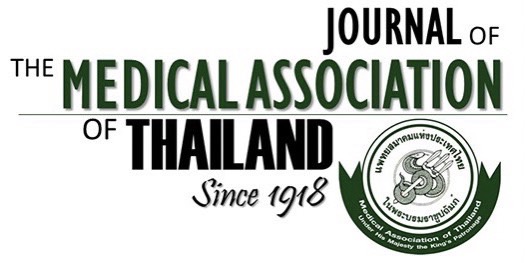Prospective Study of Hypotension and Bradycardia during Spinal Anesthesia with Bupivacaine: Incidence and Risk Factors, Part Two
Thitima Chinachoti MD*, Thara Tritrakarn MD*
Affiliation : * Department of Anesthesiology, Faculty of Medicine, Siriraj Hospital, Mahidol University
Objective : Hypotension and bradycardia during spinal anesthesia are common and may relate to severe
adverse events such as cardiac arrest or death. The authors’ first retrospective study identified three non-
modifiable factors including females, age more than 40 years, and type of operation. Level of blockage higher
than T5 was the only one modifiable factor that could be confirmed. That study was strongly limited by the
nature of the retrospective anesthetic record reviewed study.
Materials and Methods : The authors prospectively studied the records of 2,000 patients who received spinal
anesthesia at Sriraj Hospital from 1 July 2004 to 31 December 2004. The collected parameters were patient
demographic data (sex, age, body weight, height, ASA status), operative data (type of operation, emergency
status, position and duration of operation), anesthetic data (type and dosage of local anesthetic agents used,
intravenous fluid, vasoactive and sedative agents, highest sensory level of spinal blockage, usage and doses
of spinal opioids). Recording forms of hypotension and bradycardia were completed by the responsible
anesthetic team in each consecutive patient.
Results : Incidence of hypotension (20% or more decrease in systolic blood pressure) in the present study was
57.9%. The highest incidence was in cesarean section. Four non-modifiable risk factors could be identified
which included females, age more than 50, body mass index more than 35 (OR = 2.1, 95%CI 1.01-4.29) and
type of operation. Two modifiable risk factors included high dose of heavy bupivacaine (OR 1. 88, 95%CI 1. 3-
2.74) and level of sensory blockage equal to or higher than T5 (OR 2.27, 95%CI 1.73-2.97).
Conclusion : Usage of high dose of heavy bupivacaine and level of blockage higher than T5 were two modifi-
able risk factors associated with hypotension during spinal anesthesia. Avoidance of high block and lower
dose of heavy bupivacaine can reduced the incidence and severity of hypotension after spinal anesthesia.
Keywords : Risk factors, Hypotension, Spinal bupivacaine



